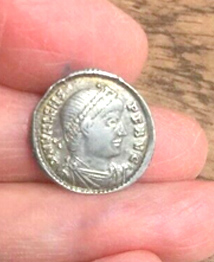Kodumanal: How a barren land turned into a treasure trove 03 Jul, 2021 ERODE

Excavations have gained traction since 1985, shedding light on life during the megalithic and early historic periods
Kodumanal, a non-descript village located about 15 km away from Erode in western Tamil Nadu, is back in the spotlight, with archaeologists resuming excavations.
Lying on the northern banks of Noyyal river and about 15 km away from the weaving town of Chennimalai, the remote village first gained attention only in 1961, when the Archaeological Survey of India (ASI) made the first dig after noticing antique materials scattered on the barren land. It was only S. Raju, Tamil scholar and then Professor of Epigraphy, Tamil University, Thanjavur, who brought out the fact that the barren land was a treasure trove of antiques, following which excavations began in 1985 for the first time.
The ongoing excavations, conducted by the Tamil Nadu Department of Archaeology, in collaboration with Tamil University, have brought to light two cultural periods — megalithic and early historic.
Rajan, Professor of History, Pondicherry University, spearheaded many excavations and made significant discoveries over the years, including that Kodumanal was known for its gemstone industry. Archaeologists identified two major areas — one that served as a habitation-cum-industrial area, and the other, megalithic burial sites.
About 2,300 years ago, the village prospered as an industrial and trade centre that made iron and steel, bangles out of shells and exquisite beads. It was bustling with industrial activity. Potsherds inscribed with Tamil Brahmi scripts, graffitis, Roman silver coins, quarts and precious stones were unearthed during the previous excavations. The previous excavations also revealed that beads made at Kodumanal were exported.
Mentioned as Kodumanam in Padhitrupathu of Sangam literature, it was once a flourishing city lying on the ancient trade route connecting the Chera capital of Karur with the Chera port of Muciri, which is present-day Pattnam in Kerala.
The barren land is given life when the excavation sparks interest among many who want to learn about the ancient civilization and their culture. Visitors would find menhirs at the entrance, welcoming the people of the present to see the past.
A 10-member team, led by J. Ranjith, archaeology officer and project director for Kodumanal excavation, from the State Department of Archaeology, Chennai, once again began excavation at the village on February 26. The work was halted due to the total lockdown in May-June. The excavation resumed on June 12, and the team has so far unearthed 1,535 antique items.
A total of 662 broken bangles (444 made of glass, 217 shells and one terracotta), 348 full shapes, one broken and five unfinished beads (214 glass, 38 shell, 36 paste, nine carnelian, four stone, 19 amethyst, 12 terracotta, 10 quartz, each one of smoking quarts, jasper, bone and agate and three soapstone), 53 rings, 190 iron objects (161 nail, 14 chisel, 11 knife, one each of took and small bowl and two unknown), 118 pottery pieces, 83 terracotta items, 28 copper items, 15 coins and two stone objects have been unearthed so far.
Currently, the team has identified five megalithic burial sites, all located 500 metres from the river, and excavation is in progress. Of the three burial sites with cairn-circle mounds that were opened, the team found legged jars, ring stands, utensils, shallow bowls, ceremonial offering pots and skulls. Previous excavations revealed that a multi-ethnic group lived in the village and they believed the deceased person will get a new life after death. Hence, pots and bowls filled with grains and utensils used by them were kept in the cists and chambers. While the industrial site is located on the northern banks of the Noyyal, the burial sites are located at two places spread across five acres.
From the wall of
https://www.thehindu.com/news/national/tamil-nadu/kodumanal-how-a-barren-land-turned-into-a-treasure-trove/article35126812.ece